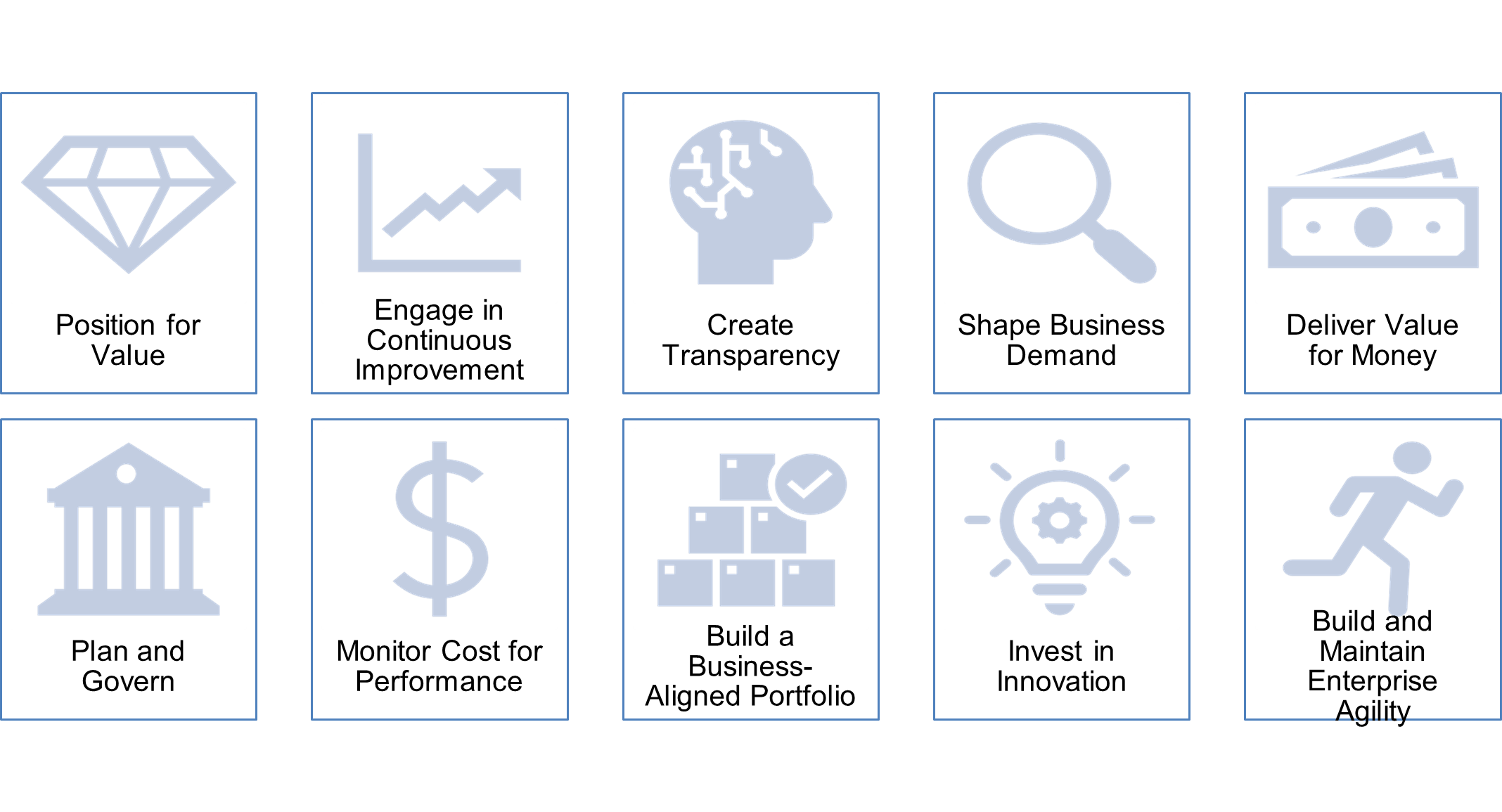Technology Business Management: Developing a Cohesive TBM Strategy

Worldwide spending on information technology (IT) is projected to top $4 trillion in 2021. Knowing this, it is abundantly clear that technology must now be fully integrated into all aspects of an organization’s operations, regardless of industry. Although many organizations long understood IT as a separate business unit supporting their core mission, this new reality requires a shift toward a strategic, data-driven approach to institutional decision-making. Enter Technology Business Management, or TBM.
TBM is a discipline devoted to planning, managing, and optimizing the value of tech investments across all business units. Your organization’s leaders are no doubt already collaborating on a TBM framework to some degree, especially when contemplating new IT capital expenditures or business process automation protocols. A comprehensive TBM strategy helps frame business decisions properly to align all tech investments in support of business goals, clarify and reduce the unit economic cost of IT, and realize the full value of applications and service level agreements (SLA’s) with vendors. Here’s how to develop a cohesive TBM strategy:
1. Understand What a Technology Business Management Strategy Is, and What It Is Not
The Technology Business Management Council defines TBM as “a value management framework used by chief information officers (CIOs), chief technology officers (CTOs), chief financial officers (CFOs) and their teams for data-driven decision making about IT initiatives.”
This framework defines all the tools, processes, data, and people required to manage technology properly across an organization. Ten core TBM principles scaffold the guidance and best practices delivered by a TBM framework.
Figure 1. Ten Core TBM Principles
While TBM follows a set of standards and aims to integrate technology into business norms, it is not a one-size-fits-all solution. Institutional technology needs vary widely by corporate size and sector. Often, a third-party lens can help view all the ways IT can and should be in service to your unique corporate mission.
2. Identify the Players — and Secure Their Buy-In
When implementing a TBM framework, it’s crucial to understand who will be participating. Obviously, the Chief Information Officer (CIO)/Chief Technology Officer (CTO) and Chief Financial Officer (CFO) are the chief users. By making technology needs and costs visible and transparent to all leaders within an organization, however, TBM can eliminate siloed decision-making. With better decision-making, organizations can remove application redundancies and cut extraneous IT spending.
This change can be a challenge at first. Those in more traditional corporate roles may see technology as secondary to their interests. Some may balk at the upfront costs associated with implementation, including systems analysis and application spending. In addition, accurate data may not be available to help analyze existing and anticipate future needs across all business units.
By emphasizing the strategic advantages of TBM, including the very likely cost-savings, and by collaborating with users at all levels of the organization to access usable data — and in some cases relying on self-service business intelligence tools and even machine learning — tech leads can overcome resistance and secure buy-in for a cohesive TBM approach.
3. Specify and Deploy Metrics
Trustworthy data is so key to planning, implementing, and assessing a TBM strategy. With the proper data, TBM can describe the full arc of IT needs and expenses, from revenue drivers to revenue supporters to keep-the-lights-on (KTLO) infrastructure needs, including labor and licensing costs. These IT needs and expenses are highly organization specific. When properly deployed, TBM helps organizations roll IT costs, quality, and value metrics into an appropriate understanding of their unit economic costs (for instance, the actual cost per bed in an assisted living facility).
TBM may also help eliminate the practice of budget padding — adding funds at the outset to cover unexpected costs later on — by making tech needs understandable and transparent. For example, what data do you need to map and allocate your IT costs and resource consumption? A consultant versed in the principles of TBM can help you attain a higher-level understanding of your data needs and determine how to measure them.
4. Grow Your TBM with Your Organization
TBM is not a one-size-fits-all solution. Neither should it be a fixed solution for all your organization’s developmental stages.
As your organization grows and as its tech needs evolve and diversify. Your technology business management approach should change accordingly. Your TBM should be designed to integrate data from any new source with minimal effort. This approach allows you to always have a primary source of truth that provides insights into spending and resources. These insights can then help determine how much to invest in maintaining legacy technology vs. acquiring new or more innovative tech as conditions change.
How Could Your Organization Put TBM to Good Use?
Case study after case study shows that TBM is helping practitioners integrate IT across all business units and align IT goals with business goals. From vast government entities to large corporations, TBM enables organizational processes to become more holistic and transparent. Organizations can then see several benefits, such as increased responsiveness to corporate change and value realization from SLA’s, while benefiting negotiations with vendors and reducing costs.
Are you putting TBM to its best use in your organization? Contact Momentum today to learn more about developing a cohesive Technology Business Management strategy.
 Tap to email
Tap to email

